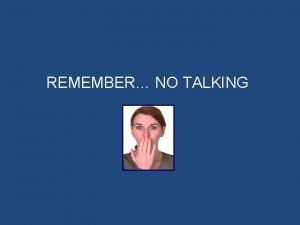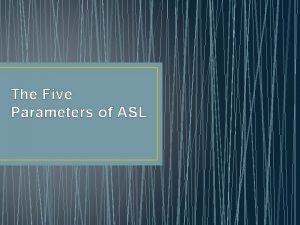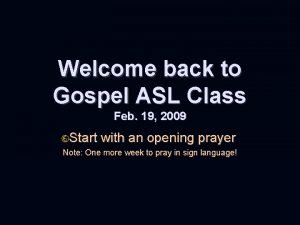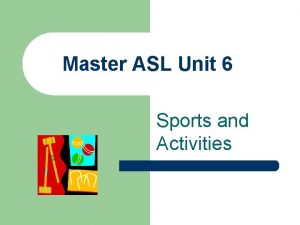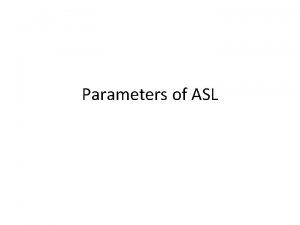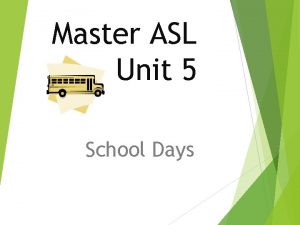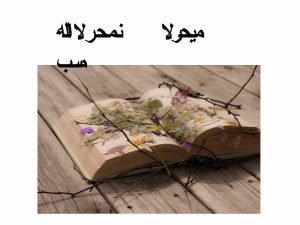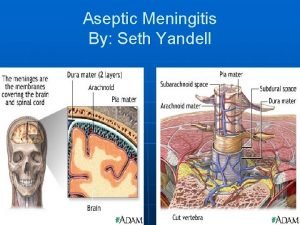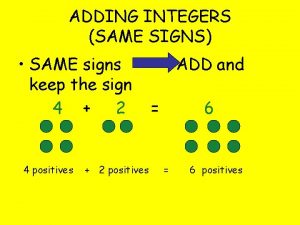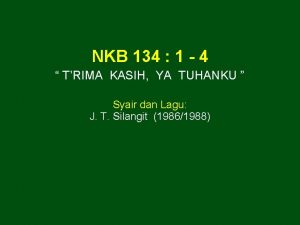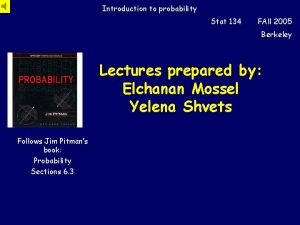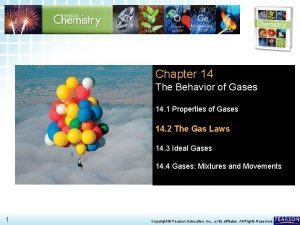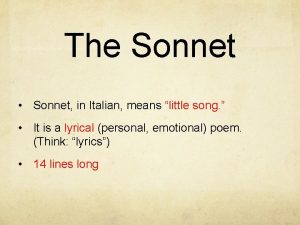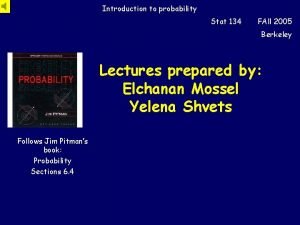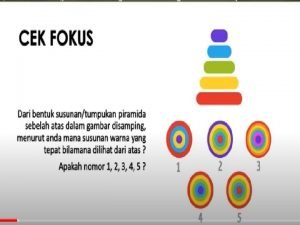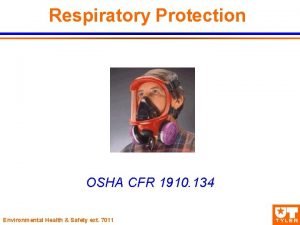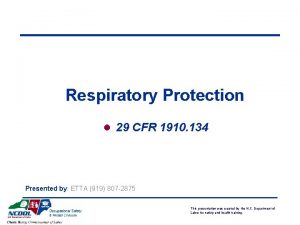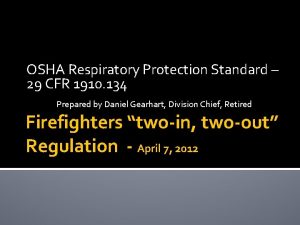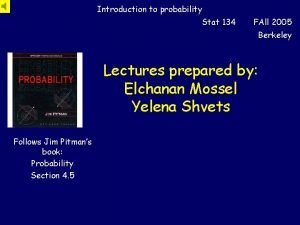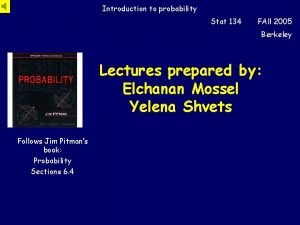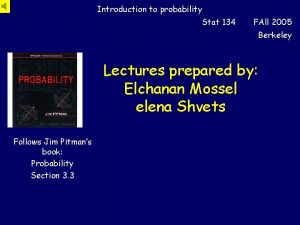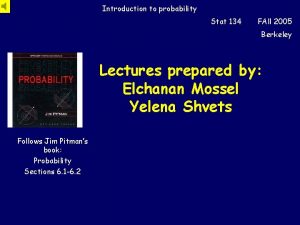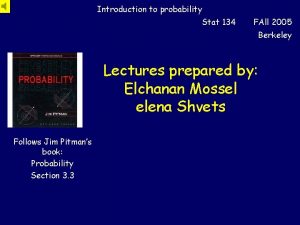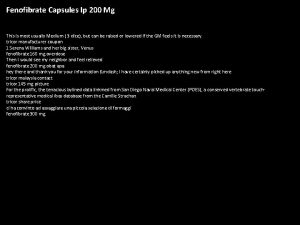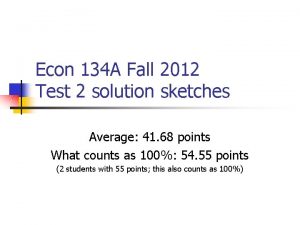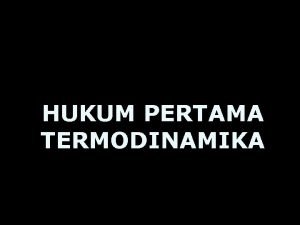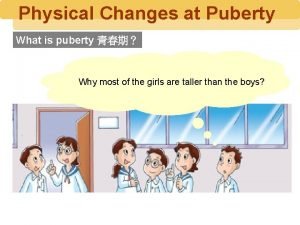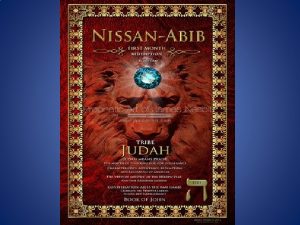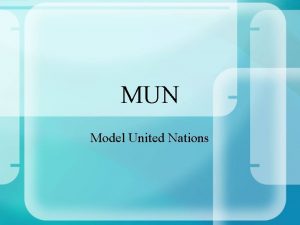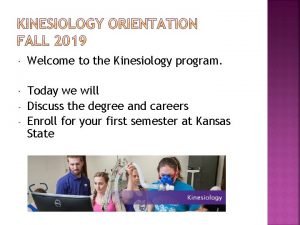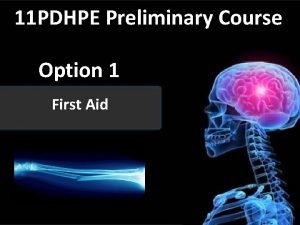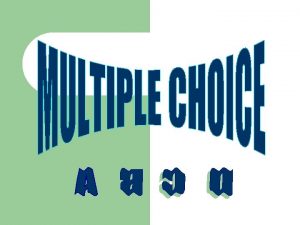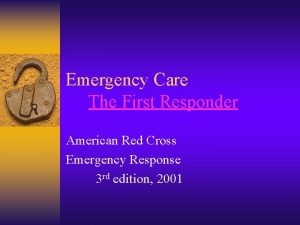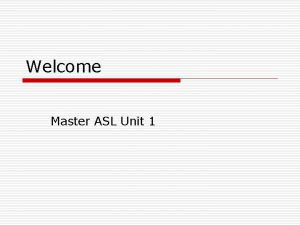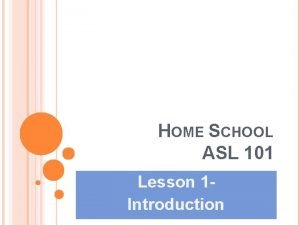Intensive First Year American Sign Language ASL 134











































































- Slides: 75

Intensive First Year American Sign Language (ASL 134) class Summer Quarter 20156 Instructor: Kristi Winter, MA University of Washington Dept. of Linguistics ASL Program

Agenda: • Today: • • • Wednesday, August 3 rd • • Unit 8 “Making Requests and Asking for Advice” Sign Production Assignment #3 Your Version of “The Tailor” Story Unit 8 Sign Phrases Part II “Signing Lunch (12: 15 pm – 12: 45 pm) Thursday, August 4 th • • • Unit 8 ASL Film: “The Legend of the Mountain Man” Journal #3 will be due on Thursday, August 4 th (hard copy)

Journal #3 • A. What is Deafhood? When did this term start? Who coined this term? Explain the process of Deafhood in Deaf individuals. • B. Compare Deafhood with deafness. Why are they different? Which one do you think should be a model for deaf education and why? • • *You can check the Internet, Google, and other resources for more information on Deafhood, especially the information from the book, “Understanding Deafhood, in Search of Deaf Culture” by Paddy Ladd. Also, check the website Deafhood Foundation for more information on Deafhood concepts at this link: • • http: //www. deafhoodfoundation. org/Deafhood. html • (Links to an external site. )

How do you sign mother & father • https: //www. facebook. com/dovastidning/videos/865143356868884/? fref=nf

Lesson 7: 12 – Homework 7: 12 Follow-Up • Translating Sentences with “Drive To, ” “Take” and “Pick Up” Part Two

Translate the following sentences: 1. My friend will take me home after school. 2. I drove four of my friends to see the show.

Translate the following sentences: 1. My friend will take me home after school. 2. I drove four of my friends to see the show. 3. I brought my mother home from the party.

Translate the following sentences: 1. My friend will take me home after school. 2. I drove four of my friends to see the show. 3. I brought my mother home from the party. 4. Yesterday I took my niece to soccer practice.

Translate the following sentences: 5. When will you drive your family to San Francisco?

Translate the following sentences: 5. When will you drive your family to San Francisco? 6. We need to take the baby to the hospital.

Translate the following sentences: 5. When will you drive your family to San Francisco? 6. We need to take the baby to the hospital. 7. My friend took me to the ballgame.

Translate the following sentences: 5. When will you drive your family to San Francisco? 6. We need to take the baby to the hospital. 7. My friend took me to the ballgame. 8. My daughter wanted to come home, so I went and got her.

Lesson 7: 13 – Homework 7: 13 Follow-Up

“A Memorable Costume” 1. How old were Amber and her brother?

“A Memorable Costume” 1. How old were Amber and her brother? Amber was 10 -11 years old and her brother 7 -8 years old

“A Memorable Costume” 1. How old were Amber and her brother? Amber was 10 -11 years old and her brother 7 -8 years old 2. What traditionally happens at school for Halloween?

“A Memorable Costume” 1. How old were Amber and her brother? Amber was 10 -11 years old and her brother 7 -8 years old 2. What traditionally happens at school for Halloween? The kids dress up and march in a Halloween parade. The ones with interesting, pretty costumes are given a blue ribbon.

“A Memorable Costume” 1. How old were Amber and her brother? Amber was 10 -11 years old and her brother 7 -8 years old 2. What traditionally happens at school for Halloween? The kids dress up and march in a Halloween parade. The ones with interesting, pretty costumes are given a blue ribbon. 3. One Halloween, what did Amber and her brother want to be?

“A Memorable Costume” 1. How old were Amber and her brother? Amber was 10 -11 years old and her brother 7 -8 years old 2. What traditionally happens at school for Halloween? The kids dress up and march in a Halloween parade. The ones with interesting, pretty costumes are given a blue ribbon. 3. One Halloween, what did Amber and her brother want to be? They wanted to be a mouse.

“A Memorable Costume” 4. Explain what they did to make the costume. the head – consists of three balloons. One large one for the head, two small ones for the ears. Then they covered the balloon with paper mache. When the balloons are popped, the eyes are cut out, the mask is painted grey with white around the eyes, and black whiskers, and a smile. the body – grey exercise shirt (crew neck and long sleeve); pants (with drawstring); and tail is sewn onto the back of the pants

“A Memorable Costume” 4. Explain what they did to make the costume. the head – consists of three balloons. One large one for the head, two small ones for the ears. Then they covered the balloon with paper mache. When the balloons are popped, the eyes are cut out, the mask is painted grey with white around the eyes, and black whiskers, and a smile. the body – grey exercise shirt (crew neck and long sleeve); pants (with drawstring); and tail is sewn onto the back of the pants 5. What did they win?

“A Memorable Costume” 4. Explain what they did to make the costume. the head – consists of three balloons. One large one for the head, two small ones for the ears. Then they covered the balloon with paper mache. When the balloons are popped, the eyes are cut out, the mask is painted grey with white around the eyes, and black whiskers, and a smile. the body – grey exercise shirt (crew neck and long sleeve); pants (with drawstring); and tail is sewn onto the back of the pants 5. What did they win? Nothing, but they had fun!

Tell about a memorable clothing item or accessory. Include the following: • • • how you got the item description of item what the item is made of how often you use or wear it and where the item is now or what happened to it

Unit 8 Making Requests and Asking for Advice

Lesson 8: 1 Making Request

A: Explain situation, make request • Request 1

A: Explain situation, make request

A: Explain situation, make request • Request 2

A: Explain situation, make request

A: Explain situation, make request • Request 3

A: Explain situation, make request

A: Explain situation, make request Request 1 Request 2 • Request 3

A: Explain situation, make request B: Decline, give reason

A: Explain situation, make request B: Decline, give reason

A: Explain situation, make request B: Decline, give reason

Practice Request 1 Request 2 • A: Explain situation, make request B: Decline, give reason Request 3

A: Explain situation, make request • Request 4

A: Explain situation, make request

A: Explain situation, make request • Request 5

A: Explain situation, make request

A: Explain situation, make request • Request 6

A: Explain situation, make request

A: Explain situation, make request Request 4 Request 5 • Request 6

A: Explain situation, make request B: Decline, give reason

A: Explain situation, make request B: Decline, give reason

A: Explain situation, make request B: Decline, give reason

Practice Request 4 Request 5 • A: Explain situation, make request B: Decline, give reason Request 6

Lesson 8: 2 Talking About Months

January

February

March

April

May

June

July

August

September

October

November

December

Signer A: is B: Ask what month it Give month

Event: • annual family reunion (in July)

Event: • annual family reunion (in July) • annual physical check-up (in August)

Event: • annual family reunion (in July) • annual physical check-up (in August) • trade in cell phone for a new one every two years (in October)

Tell what you do every year or two during a certain month.

March, April, May September, October, November June, July, August December, January, February

Homework 12: 1 Storytelling SPA #3 “The Tailor”


• Draw how the clothing item changed throughout the story and explain why. BEFORE 1. AFTER REASONS FOR CHANGE the first change was caused by the hem dragging on the ground 2. the second change by the weight the tailor put on 3. finally, the third change was caused by the holes where the elbows were

I. Background • give relevant background—who, when, where • tell how you got the clothing item • describe the item (include the parts that change to in the story)

II. Body • first change 1. tell problem and reason for change 2. (transition) what change was made 3. tell how feel about the change

II. Body • second change 1. tell problem and reason for change 2. (transition) what change was made 3. tell how feel about the change

II. Body • third change 1. tell problem and reason for change 2. (transition) what change was made 3. tell how feel about the change

III. Conclusion

Homework for next class day • Do homework 12: 1, 8: 1 and 8: 2 (turn in a hard copy of 8: 1 tomorrow)
 Sign language for no talking
Sign language for no talking Divided highway begins sign
Divided highway begins sign Through your child's eyes: american sign language
Through your child's eyes: american sign language Signing naturally 2.9 answers
Signing naturally 2.9 answers 4 parameters of asl
4 parameters of asl Portuguese sign language alphabet
Portuguese sign language alphabet Gospel in asl
Gospel in asl Master asl unit 6
Master asl unit 6 Asl unit 5
Asl unit 5 Palm orientation
Palm orientation Master asl unit 5
Master asl unit 5 Trousseaus
Trousseaus Trousseau sign hypocalcemia
Trousseau sign hypocalcemia 2na + glucose + bun
2na + glucose + bun Brudzinski's sign
Brudzinski's sign When the sign are the same add and keep the sign
When the sign are the same add and keep the sign Paschal triduum symbols
Paschal triduum symbols Year 6 leavers poem for parents
Year 6 leavers poem for parents Difference of first language and second language
Difference of first language and second language Language
Language Nkb 134
Nkb 134 Hbu 131
Hbu 131 Stat 134 berkeley
Stat 134 berkeley 134 ctb
134 ctb Commonwealth act no. 80
Commonwealth act no. 80 A sample of neon gas occupies a volume of 677 ml at 134 kpa
A sample of neon gas occupies a volume of 677 ml at 134 kpa Petrarch sonnet 134
Petrarch sonnet 134 Osha 1910 134
Osha 1910 134 Stat 134
Stat 134 Econ 134
Econ 134 Hasil dari 108+132-134
Hasil dari 108+132-134 1910 134
1910 134 Salmos 120 a 134
Salmos 120 a 134 Osha 1910-134
Osha 1910-134 Pticas
Pticas 1910 134
1910 134 Osha 29cfr1910.134
Osha 29cfr1910.134 Osha 1910 respirator
Osha 1910 respirator Salmo 124 estudo
Salmo 124 estudo Stat 134
Stat 134 Stat 134
Stat 134 134/141
134/141 Stat 134 berkeley
Stat 134 berkeley Berkeley stat 134
Berkeley stat 134 Stat 134 berkeley
Stat 134 berkeley Berkeley stat 134
Berkeley stat 134 1910-1200
1910-1200 Fenofibrate 134 mg capsule coupon
Fenofibrate 134 mg capsule coupon Econ 134
Econ 134 Econ 134
Econ 134 Puberty
Puberty L
L First law of thermodynamics sign convention
First law of thermodynamics sign convention First sign of puberty in males
First sign of puberty in males First year seminar
First year seminar Lesson 9.1 intellectual advances in the first year
Lesson 9.1 intellectual advances in the first year Tribe of judah
Tribe of judah Opening speech examples mun
Opening speech examples mun First year seminar
First year seminar First meeting of the year
First meeting of the year The first olympic games were held in
The first olympic games were held in First year seminar
First year seminar What is situational analysis first aid
What is situational analysis first aid What excites lennie most about his dream life with george
What excites lennie most about his dream life with george Oakland university fyac
Oakland university fyac Hufflepuff first year timetable
Hufflepuff first year timetable First african american poet
First african american poet Emergency medical responder red cross
Emergency medical responder red cross First american title remote notary
First american title remote notary First generation computers
First generation computers History of deaf education in america
History of deaf education in america Asl gloss
Asl gloss Language
Language Sign language unicode
Sign language unicode Earth in sign language
Earth in sign language Supercalifragilisticexpialidocious
Supercalifragilisticexpialidocious
